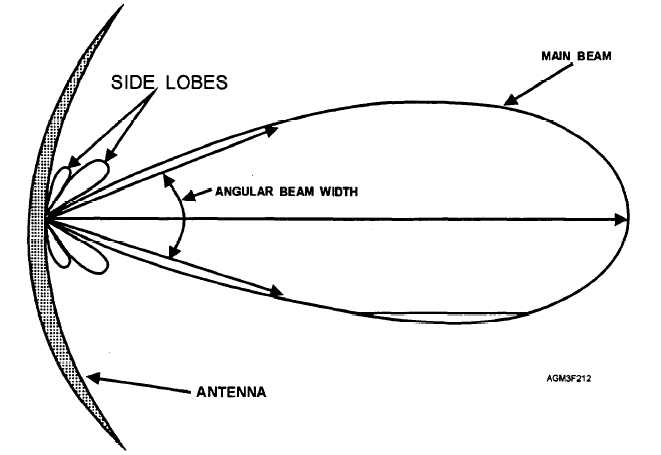appear as one echo. In short, multiple targets at a
distance are difficult to see correctly.
Sidelobes
In addition to the main beam, antennas produce
rays of energy called sidelobes, which surround the
main beam (primary lobe) like haloes (fig. 2-12).
Sidelobes extend outward only a short distance from
the radar and contain very low power densities.
However, even though they are weak, sidelobes can
detect strong non-meteorological targets near the radar
and are also disturbed by nearby g-round reflections.
This leads to confusion in interpreting close targets
because sidelobe targets are displayed along with the
main beam targets.
RADAR RESOLUTION
Radar resolution is the radar’s ability to display
targets correctly. Both azimuthal resolution and range
resolution are problems that commonly effect all
radars. Recall our earlier discussion about distant
objects and their distorted appearance. Resolution
affects radar much the same way.
Azimuthal Resolution
Azimuthal resolution is often called bearing or
directional resolution. It is a radar’s ability to display
side-by-side targets correctly. Azimuthal resolution is
controlled by beam width as only targets separated by
more than one beamwidth can be displayed separately.
As the radar antenna rotates, targets too close
together occupy the beam simultaneously. This causes
them to be displayed as one wide target, stretched
azimuthally (sideways). Since azimuthal resolution
depends on beamwidth, which changes with distance,
targets near the antenna require less separation than
those further out. Near the antenna, a narrower beam
allows the radar to recognize tighter gaps and display
targets separately. At greater distances, more
separation is required. If targets are not separated by
the prescribed amount, distortion occurs and
resolution suffers. With the WSR-88D, azimuth
distortion is approximately 1 mile at a 50-nmi range.
Thus, at 250 nmi, two targets must be about 5 miles
apart before they will appear as two separate targets.
Figure 2-12.—Radar sidelobes.
2-9


